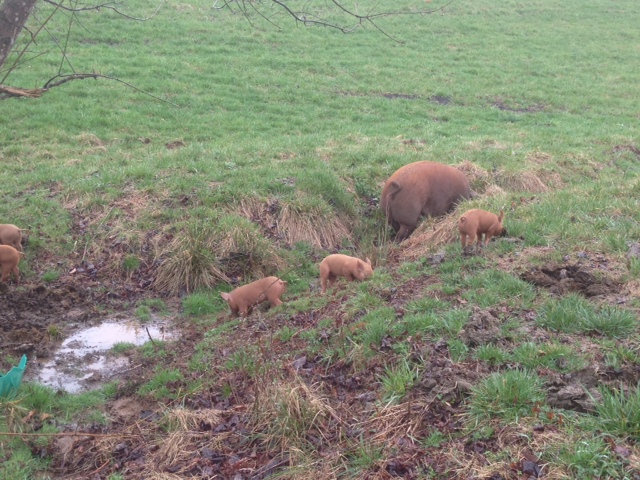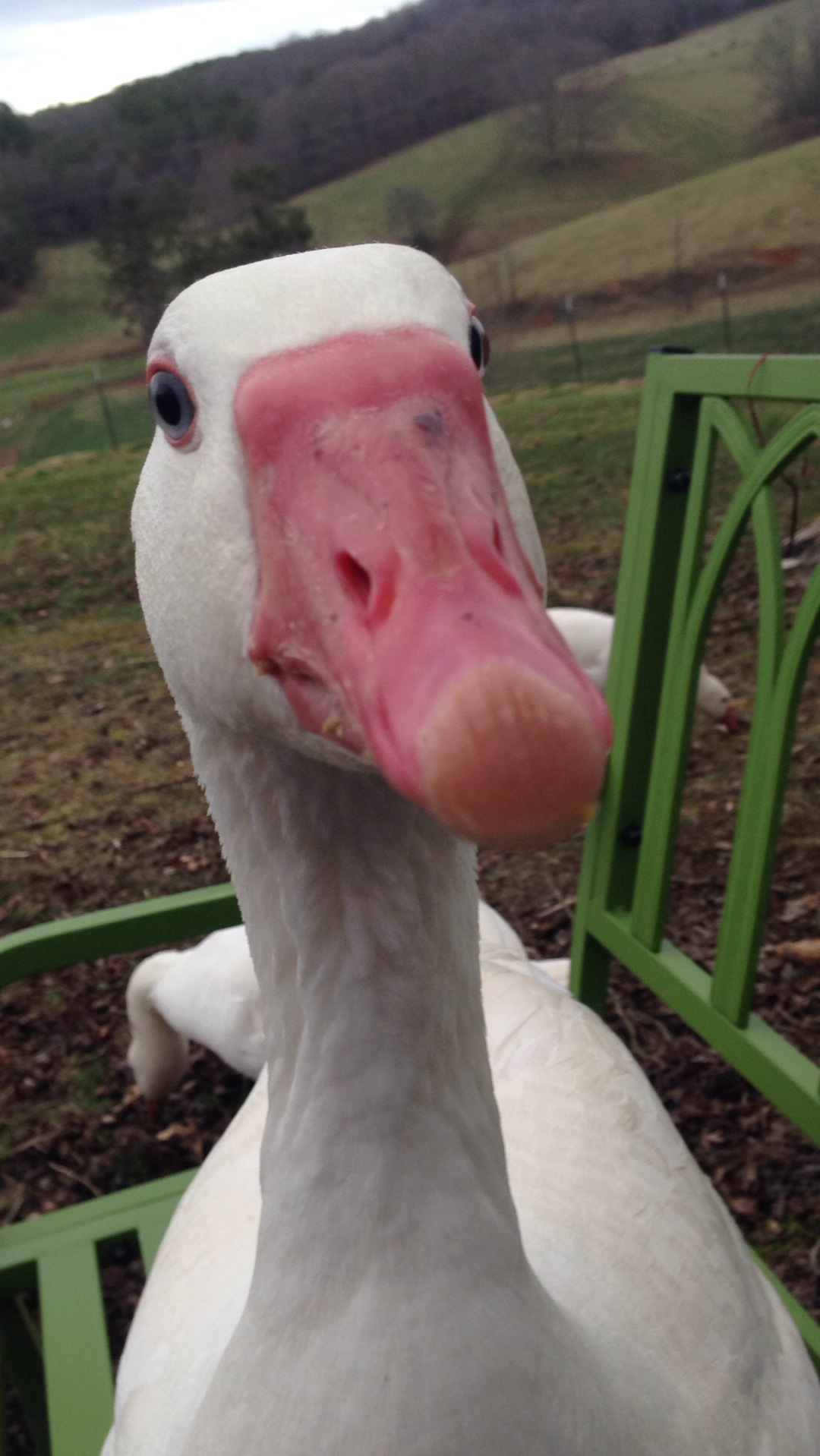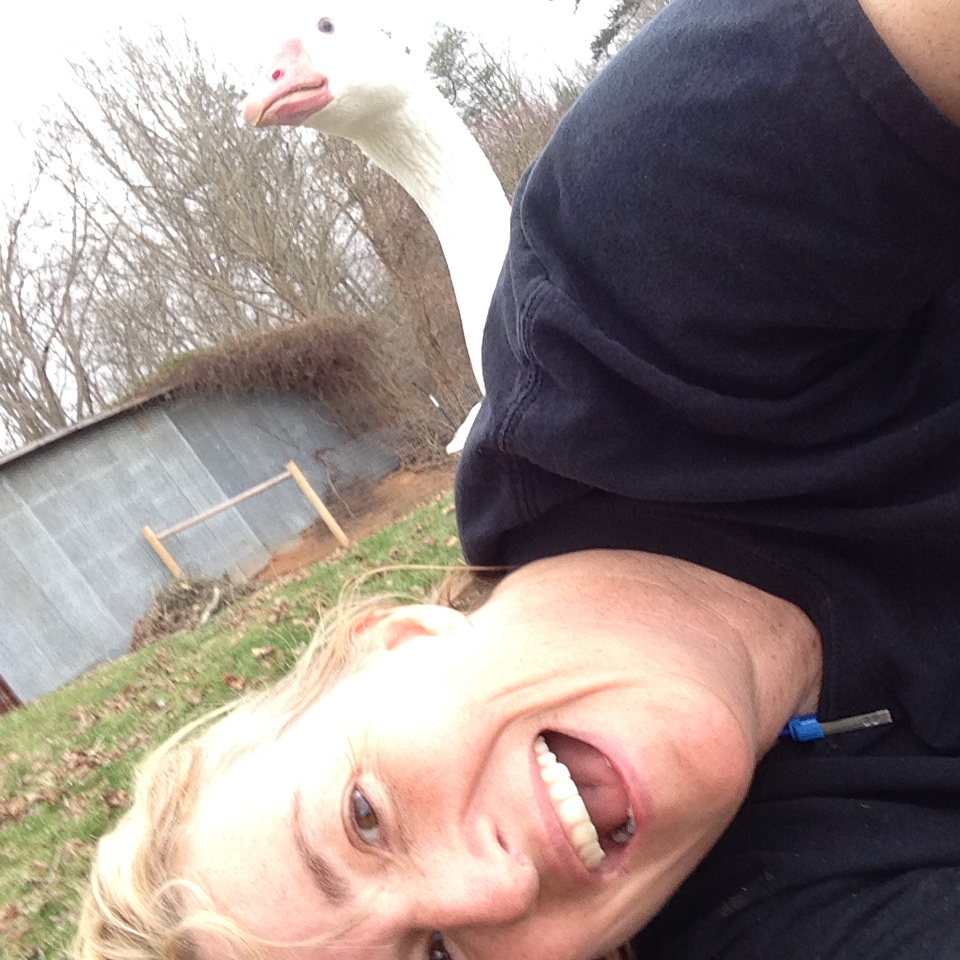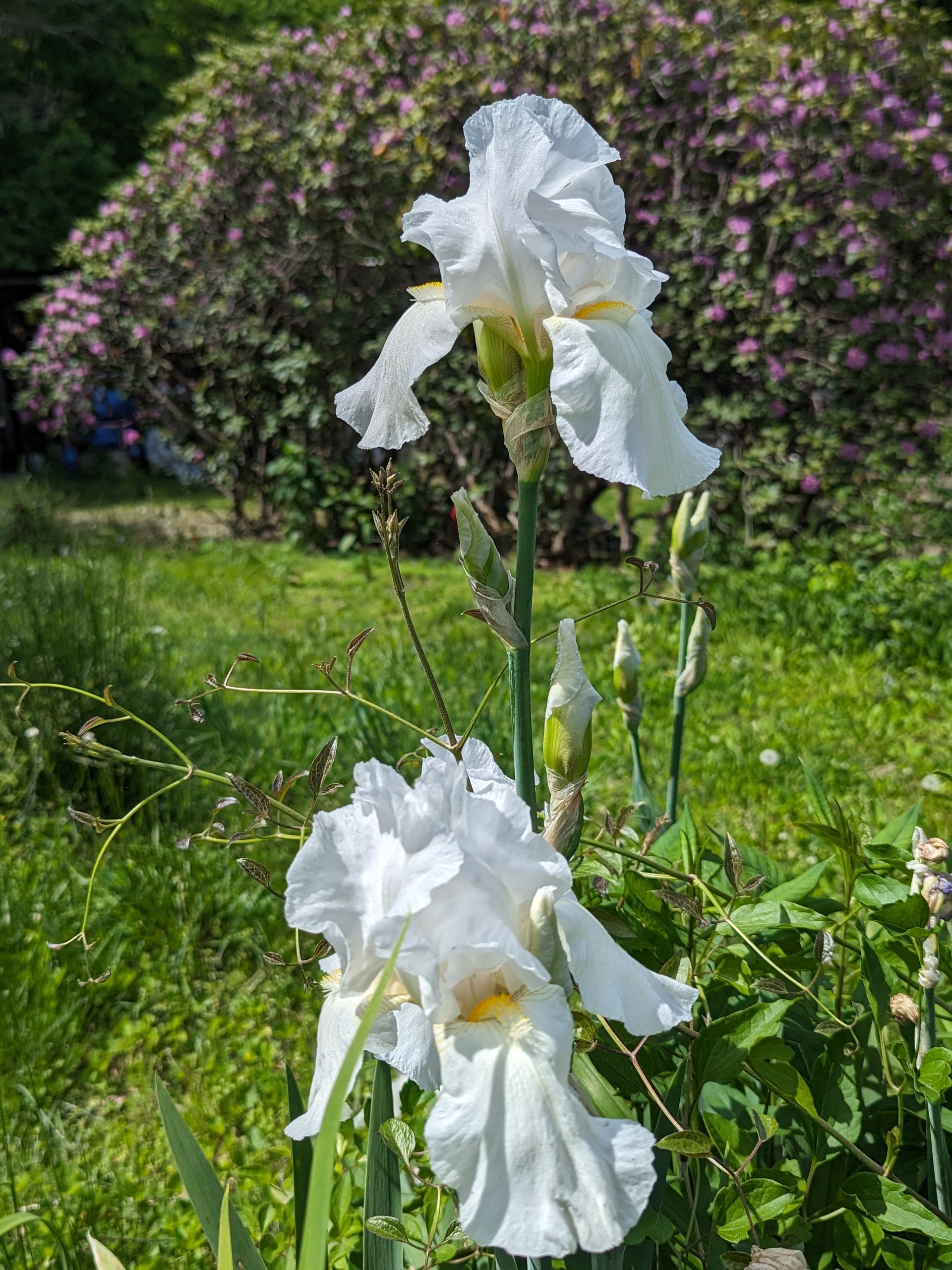I sit, watching the sky darken, and contemplate the task of mucking out our sow’s stall. I need to dispose of the straw she’s kept so warm for her litter this winter, the lice have not died off despite bone-chilling weather.
I’ve finished my basic daily chores. I revisit the list in my head.
Quail, fed, watered, eggs collected.
Rabbit’s hutch cleaned. Now the doe h as some space to run from her growing 4-week old litter.
Fed, watered and collected eggs from the chickens.
Fed watered and collected eggs from the geese.
Inside the house, the eggs get piled up in a basket; quail eggs and chicken eggs separately. Goose eggs go to the garage for incubating, although today I pack a half-dozen to send to a friend in Louisiana to hatch under one of his broody Cotton Patch geese.
Just as I close the package for shipping, I hear a commotion from the geese. I glance out the window expecting them to be in the pond mating. I can barely see the tops of their heads pointed down and straight out chasing and yelling at something.
Slipping back into my boots I run down the hill to chase away whatever predator might be there only to discover one of my ganders tearing into a hen. He simply hates the chickens and during nesting season his fervent hatred of them only grows. I gather the hen, take her to the barn and make a nest for her near the quiet rabbits and quail so she can rest and recover.
And then the rain comes. I don’t feel like mucking a pig’s pen in the rain. I decide to procrastinate and do the office work piling up on my desk instead.
A normal day on the farm.
When we moved to Blue  Ridge full-time six years ago, my husband Danny and I believed there would be a wealth of farmers ready to quench the unending thirst of our restaurant for fresh product. As it turns out, that wasn’t the case. So I began to look more fervently for some space to plant heirloom produce and specialty herbs. We happened upon a small 1.5-acre parcel in town and turned into a sustainable homestead project to illustrate what anyone can do in their own backyard. It’s a great testament to the fact you don’t need 40 acres, or even 10, to have a homestead. Even a small acreage such as 2 or 4 acres can provide for a family.
Ridge full-time six years ago, my husband Danny and I believed there would be a wealth of farmers ready to quench the unending thirst of our restaurant for fresh product. As it turns out, that wasn’t the case. So I began to look more fervently for some space to plant heirloom produce and specialty herbs. We happened upon a small 1.5-acre parcel in town and turned into a sustainable homestead project to illustrate what anyone can do in their own backyard. It’s a great testament to the fact you don’t need 40 acres, or even 10, to have a homestead. Even a small acreage such as 2 or 4 acres can provide for a family.
The Cook’s Farm, as we aptly named it, is a good example of what you might call an urban (or suburban farm). It’s a small footprint, but produces enough product on its ½ acre garden to supply specialty items to the restaurant, feed kids during our 2-weeks of Farm-to-Fork camps in the summer, and have some extra to spare. Our chickens keep the classes, family, and CSA customers in farm fresh eggs.
My idea of homesteading is committing to self-sufficiency on whatever level you are comfortable. For us it encompasses growing and preserving food, specifically growing and saving heirloom seeds. I focus on raising animals on the American Livestock Conservancy List – breeding for meat while preserving the longevity of the breed.
Ultimately we’d like to provide our own electricity with solar or wind. I will probably never make my own fabric or clothing, but some homesteaders take the self-sufficient moniker to that end as well. Ours is a more measured approach – one that fits within our lifestyle and abilities – which I believe is one of the most critical parts of homesteading. Diving in without testing the waters is a recipe for disaster.
Chickens are a great place to test your skill set and desire. It’s where I began, researching how to build a coop; chicken attributes (layers versus meat chickens); and how to care for chickens. I was immediately hooked. Be sure to find out your local laws to make sure it’s legal, and then determine whether you have the patience for baby chicks or want to start off with pullets or hens. Honeybees are another great project for a small farm. Other than the investment in equipment and seasonal tasks, they are very self-sufficient.
The change came for larger scale production after we were gifted with a Duroc pig for the holidays in 2013. As little Noel grew into a 200-pound gilt, we knew it was time to find a bigger space. And we definitely needed to find one outside the city limits (it’s never a good thing to get a call from the neighbors to let you know your pig is heading down to Main Street).
Now we have a 28-acre parcel, slowly making the transition from the space downtown. Here, we make our own cheese, can our produce, gather our own honey, save our own seeds, and preserve our own meats. I have learned how to give an injection; hatch out chicken, duck and goose eggs; I know how to break ground and plow; how to make a cold frame; how to install an electric fence; and how to deliver and nurse piglets. We make our own sausage and hams, gather our eggs, and grow our own produce and herbs. Of course all the best product goes to the restaurants first, and the remainder is used at home.
There are plenty of things on my ‘learn to-do list’ that I will need to know with the new farm. The first on my list is to train a guard dog for our poultry and geese. We lost two of our Cotton Patch Geese the first month – a blow to my spring breeding program with the American Livestock Conservancy rare breed.
I don’t really have the desire to learn how to butcher small livestock like rabbits or chickens, but luckily that side of the equation is addressed by Danny or I can trade services with friends. One thing that homesteading has taught me is how to swap, barter and network with like-minded individuals. It’s always great to meet someone with a boar to mate with your sow; or someone who want to raise the same rabbits so we can track and trade breeding stock.
I would like to learn the differences between trees and the unique properties of various types of wood, something my husband can readily do. We’d both like to learn how to witch for water with a forked branch or a bent metal hanger (not really at the top of the list but a cool skill nonetheless). I’d also really like to learn how to rea d an almanac and to milk a goat.
d an almanac and to milk a goat.
I really need to learn how to set an ear tag or tattoo for animal identification. I have the tools just not the heart for it yet.
One skill homesteading has truly given me is the mental and spiritual skills to realistically deal with life, death and failure. That’s something no career or relationship has ever taught me so completely.
Items I treasure (aside from my family and animals)? I have to say, my very own tool set – including my own drill (which was my favorite Christmas gift this year).
Now, I really need to learn how to properly use the rest of the tools in our basement.
Well, that can wait until the rain passes.




